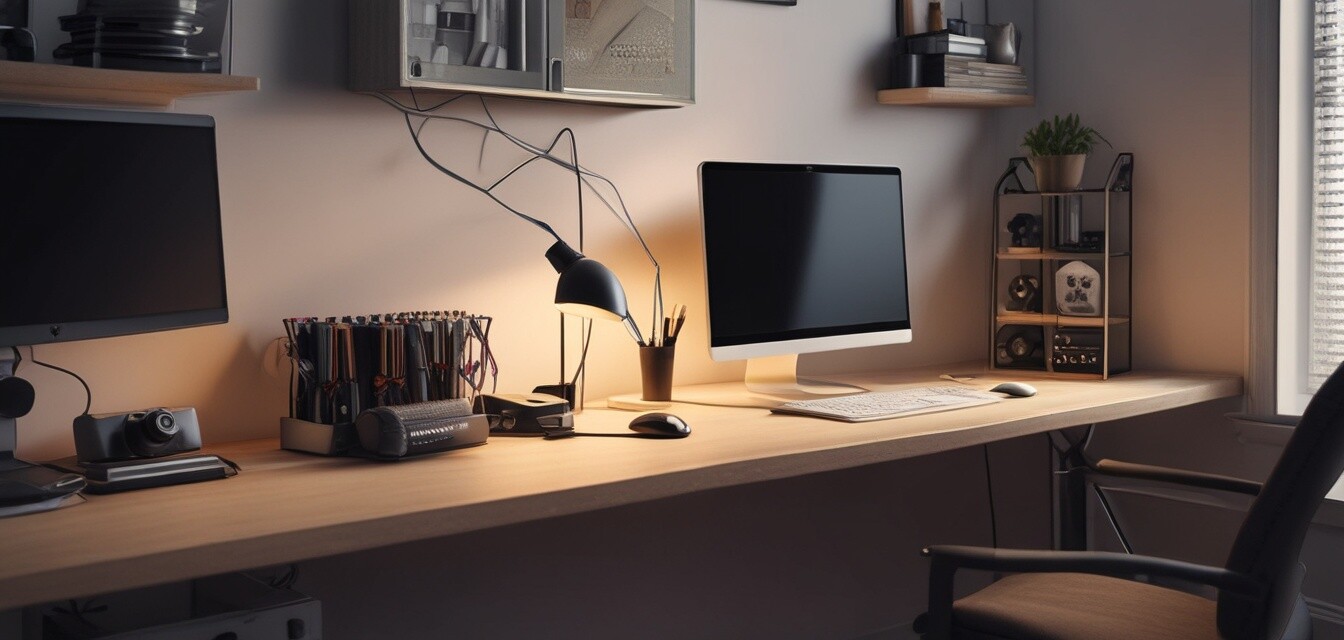
Cable management for small spaces: Tips and tricks
- Effective cable management enhances productivity and focus in small workspaces.
- Utilizing vertical space can significantly reduce clutter.
- Investing in cable organizers tailored for small spaces can make a dramatic difference.
- Regular maintenance and adjustments are key for lasting organization.
- Utilizing multi-functional furniture helps keep cables out of sight.
As remote work continues to accelerate, many professionals find themselves confined to smaller workspaces. Without proper organization, cables can quickly turn into a tangled nightmare, affecting productivity and peace of mind. This article provides effective strategies and practical tips for managing cables in small spaces without sacrificing functionality.
The importance of cable management in small spaces
In smaller work environments, cable clutter can be overwhelming. Poorly arranged cords can lead to distractions, safety hazards, and a lack of professionalism. By mastering cable management, you not only improve your workspace aesthetics but also enhance your overall productivity.
Common challenges in small spaces
- Limited available space for media and devices.
- Hiding cables without damaging walls or furniture.
- Accessing and unplugging devices easily.
- Creating a visually appealing setup.
Types of cable organizers for small spaces
There are various cable management solutions tailored specifically for compact environments. Here’s a look at some effective choices:
| Organizer Type | Description | Best Use |
|---|---|---|
| Cable clips and holders | Adhesive or mounted clips that hold cables in place. | Desk edges, walls, or under desks. |
| Cable organizer boxes | Containers that hide bulky power strips and excess cables. | Near power outlets or under desks. |
| Cable sleeves and covers | Protective coverings for bundling cables together. | Behind desks and along the walls. |
| Cable ties and straps | Fasteners for securing cables in orderly fashion. | Long runs of cables from devices to outlets. |
| Under-desk cable trays | Trays mounted beneath desks to hold cords out of sight. | For desktop areas with many devices. |
Practical tips for organizing cables
Beginner-friendly techniques to manage your workspace
- Plan your setup: Assess where devices will be placed and plan for cable length accordingly.
- Use vertical space: Mount shelves or hooks to keep equipment elevated and cables out of reach.
- Label cables: Use labels or color-coded ties to easily identify which cables belong to which devices.
- Choose multi-functional furniture: Invest in desks with built-in cable management systems.
- Regular maintenance: Set aside time every few months to check cables for wear and tear, and to tidy up any loose cords.
Advanced solutions for cable management
For those looking to invest in more sophisticated options, consider the following:
- Magnetic cable organizers: These can hold cables in place while allowing easy access.
- Wall cable channels: These allow you to route cables along walls, keeping them entirely out of the way.
- Cable management kits: Comprehensive kits come with multiple solutions for various needs.
Maintenance tips for lasting organization
Keeping your workspace organized is an ongoing process. Here are tips for maintaining order:
- Conduct a quarterly cable audit to identify any issues or wear.
- Reassess your setup after any tech upgrades or changes.
- Manage dust and debris around cords to prevent damage.
- Utilize cable organizers that are easy to update or rearrange as needed.
Pros
- Improved organization leads to increased productivity.
- Enhanced safety by reducing tripping hazards.
- A cleaner appearance boosts morale and focus.
- Customizable solutions fit various desk arrangements.
Cons
- Upfront costs for quality organizers can be high.
- Initial setup time may be required.
- Some solutions may work better for specific needs, potentially requiring multiple products.
Conclusion
Managing cables in small spaces doesn’t have to be daunting. By utilizing a mix of effective strategies and practical tools, you can cultivate a workspace that promotes efficiency and creativity. Whether you opt for simple clips to sophisticated trays, investing time in organizing your cables will pay off in a tidy, productive environment. For more insights on maintaining a clutter-free space, check out our Practical Tips category.